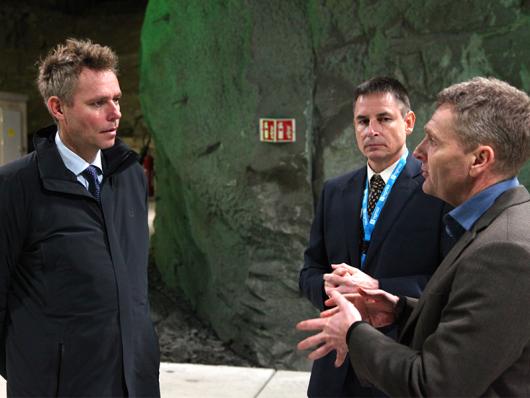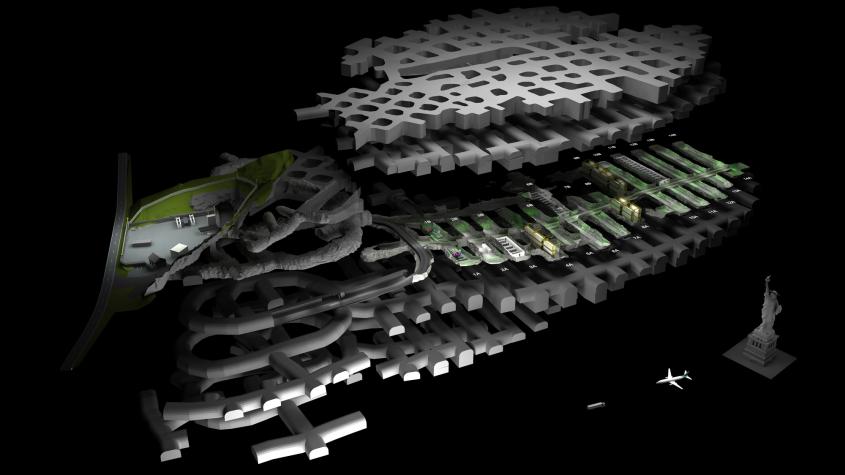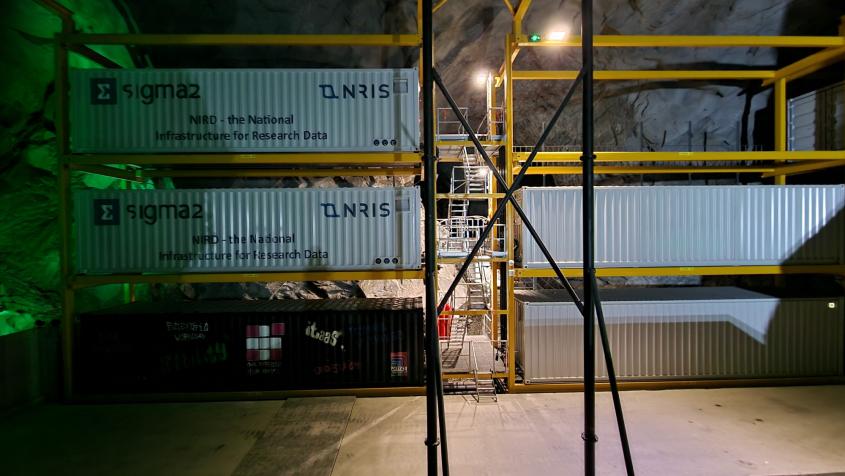60 meters underground, 700 meters inside a mountain in Western Norway, some of Norway's most important research data in areas such as climate, energy and health will be stored.
Protected against natural disasters, war, terror, fire and break-ins. This will be the largest storage offer for big data in Norway ever.

Now, NIRD, the new national storage infrastructure for scientific data is officially inaugurated, in the Lefdal Mine Datacenter near Nordfjordeid in West Norway. Minister of Research and Higher Education, Ola Borten Moe (Cent.) was responsible for the official opening of the new storage facility.
— Norway as a research nation depends on us being able to store and share data safely. Today we have good news for everyone. Now the data storage options are greatly improved, and researchers get access to new and future-oriented services that strengthen research and protect national security, says Moe.
Equivalent to 15 million DVDs
The storage service, which goes by the abbreviation NIRD (Norwegian Infrastructure for Research Data), is owned by Sigma2. NIRD is Norway's largest storage capacity and has a capacity of 32 petabytes (PB) but can be expanded to as much as 70 PB if necessary. This corresponds to the storage space of more than 15 million DVDs. The new offer replaces a 24 PB storage system that reached maximum capacity earlier this year.
—The data volume from research is constantly increasing, and we need to ensure scalability and flexibility to meet demand, says Special Advisor and Service Owner for NIRD in Sigma2, Francesca Iozzi. - Now, researchers can look forward to state-of-the-art storage services that support artificial intelligence, machine learning, data-intensive analysis and archiving.
Climate 100 years from now
More and more researchers in Norway are dependent on the secure storage of active research data. Analysing, processing and reusing large data sets must be done as simply as possible, and with enough power to support complex workflows. With the help of large data-driven models, researchers can, for example, predict with great certainty what our climate will look like in the future. Many human lives in climate-prone regions can be saved if we know more about when and where extreme weather and drought will occur.
— We have climate scenarios up to 2100, predicted by the earth system model NorESM, which is led by NORCE and the Meteorological Institute (MET). Among other things, they form the basis for decision-making for climate adaptations and the choice of future power supplies in Norway, says Michael Schulz, senior researcher at MET.
Research contributions such as this are also included in the IPCC climate reports and used in other research to find solutions that can mitigate the effects of global warming on agricultural areas and crops. The entire Norwegian climate research environment will benefit from the capacity of NIRD.
Data stored on NIRD consists of both project data that is in active use and data that is archived and openly available in the research data archive.
Access based on research quality and societal relevance
NIRD offers storage space for active data and data that is published in an archive for future reuse. All scientific disciplines that need secure storage, processing and publication of research data can apply for access.
There is a scientific committee that chooses which projects will be allowed to store active data at NIRD, based on research quality and societal relevance. All research projects can publish data in the archive.
Worldwide knowledge and local business
— To be competitive, Norwegian researchers must have access to e-infrastructure at a high international level. NIRD enables research collaboration that can contribute to worldwide knowledge in several important areas, says Sigma2's Managing Director, Gunnar Bøe.

Together with the national supercomputers, NIRD forms the backbone of the national e-infrastructure for research and education in Norway. It is the first of the national systems in place inside the mountain at Lefdal Mine Datacenter (LMD), which is located in an extensive mining system near Nordfjordeid in Western Norway. In just over a year, Norway's next supercomputer will be installed there, too. Then there will be activity outside the old mine when a local seafood producer will reuse excess heat from the supercomputer and other customers' high-capacity systems for farming activities.
- Norway's most important research data is secured here, while local jobs and increased activity are created in the region. It is also positive that other businesses can use waste heat from data centres and contribute to energy being reused, says Minister of Local Government and Regional Development Sigbjørn Gjelsvik (Sp), who was also present during the opening of the Lefdal Mine Datacenter.
— It is a great inspiration that Sigma2 has designated LMD as the data centre that best meets current and future needs. Reuse of mountain facilities, short-distance and renewable electricity, efficient cooling solutions and flexible technical designs in all result in sustainable and cost-effective operations for Sigma2. It is a great motivation for the LMD team to be able to help build the engine for research environments in Norway, says the CEO of LMD, Jørn Skaane.


NIRD is based on technology from IBM and supplied by the Norwegian IT company Move AS.
— On behalf of Move AS, I am proud that together with IBM, we have delivered Norway's most extensive storage solution for research data and that the country's research environments get access to unique services through the utilization of the absolute latest and best in storage technology from IBM, says the CEO of Move AS, Roald Sannæs.
The national calculation and data storage services are operated in collaboration between Sigma2 and the Universities of Bergen, Oslo, Tromsø and NTNU. The collaboration goes under the name Norwegian research infrastructure services (NRIS).
About NIRD
NIRD is based on IBM's Spectrum Scale, Spectrum Discover, and Spectrum Protect. NIRD's massive capacity is divided into two disks - Tiered Storage and Data Lake, where the former is dedicated to active data and performance workflows and the latter is designed to host a massive amount of data for sharing, archiving and reuse. Using object storage and APIs provides opportunities for collaboration across projects and boundaries. The I/O throughput is a whopping 229 gigabytes per second.
About Lefdal Mine Datacenter
Lefdal Mine Datacenter (LMD) is in the old Lefdal Mine between Måløy and Nordfjordeid in Vestland county. The mine was previously used to extract olivine is gigantic and extends over 120,000 square meters into the mountain, spread over many levels. This provides a very high general and physical security for data facilities that are placed there. Sigma2 is LMD's largest Norwegian customer.
About Move AS
Move AS are specialists in IT infrastructure. The company supplies market-leading technology, managed services, integration and management of Hybrid Multi-Cloud solutions, Cyber security, and data analysis to public and private enterprises throughout Norway.
About IBM
IBM is among the world's leading technology companies focusing on hybrid cloud solutions and artificial intelligence. Secure access and analysis of data are central and the core of the solutions they deliver to Move, their partner in Norway.